A stand-off at a Hong Kong university campus has led to fiery clashes overnight, as hundreds of protesters tried to repel a police advance.
Large fires broke out at entrances to the Polytechnic University (PolyU), where protesters hurled petrol bombs and shot arrows from behind barricades.
Officers earlier warned they could use live ammunition if protesters did not stop attacking them using such weapons.
Months of anti-government protests have caused turmoil in the city.
The latest violence is however some of the worst the semi-autonomous Chinese territory has seen since the movement began. The police have become targets for radical demonstrators, who accuse them of excessive force.
Demonstrators have been occupying the PolyU for days. Fresh clashes between protesters and the security forces erupted on Sunday, with tear gas and water cannon being met with petrol bombs, bricks and other improvised weapons.
- The protests explained in 100 and 500 words
- The context to Hong Kong protests
- Timeline of Hong Kong unrest
- How is Hong Kong run?
A police media liaison officer was wounded in the leg with an arrow on Sunday.
What is the latest with protests?
Sporadic battles continued throughout the night, with police making a push to re-take the campus at about 05:30 local time (21:30 GMT). They were met with petrol bombs, which started blazes around the campus.
The police appear to have subsequently withdrawn, with hundreds reportedly still inside.
Those occupying the university had been told to leave immediately on Sunday evening but many remained.
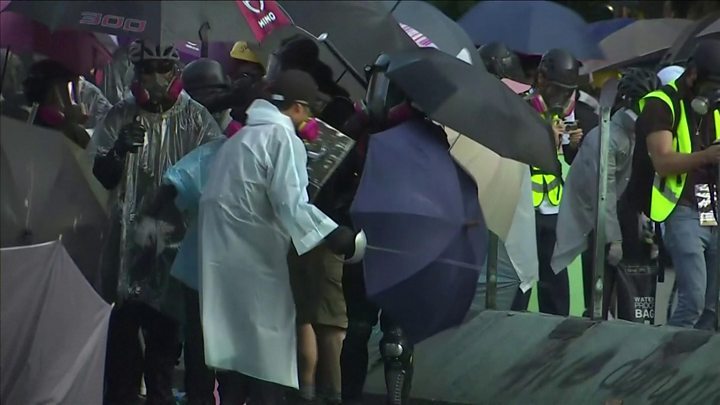
"I hereby warn rioters not to use petrol bombs, arrows, cars or any deadly weapons to attack police officers," police spokesman Louis Lau said in a statement broadcast via Facebook late on Sunday.
"If they continue such dangerous actions, we would have no choice but to use the minimum force necessary, including live rounds, to fire back."
Protesters appeared to try and fuel a large fire at the university's main entrance to try and keep police outside.
Fire officials worked to contain the blazes, but plumes of smoke could be seen across the city's skyline on Monday morning.
Earlier in the stand-off, police fired a live round in response to what they said was a car hurtling towards officers near the university.

 REUTERS
REUTERSDetermined to fight to the end
By the BBC's Gabriel Gatehouse in Polytechnic University, at 04:00 Hong Kong time
It's only the most radical left now - or the bravest, depending on your point of view. About a hundred of them are hunkered down at a junction outside the main entrance. On the other side of the road: an armoured police vehicle, and a water cannon truck.
Every 10 minutes or so, these two sides play a game of cat and mouse. The police fire tear gas and the water cannon advances, squirting noxious blue liquid. The protesters, crouching behind umbrellas, respond with petrol bombs and rocks fired from improvised catapults. The police vehicles retreat. The net result is zero. It's a stalemate. There are several hundred more protesters milling around the campus. Medics treat those who have been hit by tear gas or the blue liquid in the water cannon, which stings on contact with the skin. Others man barricades at the many entrances to this sprawling campus which is now completely surrounded. When the police announced a 22:00 deadline for the protesters to surrender or face the possibility of lethal force a significant number changed out of their black outfits, ditched their masks, and disappeared into the night. Some were arrested but others escaped.
Those who remain seem determined to fight to the end, no matter the risk. "If I die, remember me," one young man said to me. "Do you believe that could happen?" I asked. He gave a nervous shrug.

The protests in Hong Kong, which began in June, were triggered by a now-withdrawn plan to allow extradition to mainland China but have since expanded into wider demands for greater democracy and for investigations into the actions of police.
The government recently confirmed the city had entered its first recession for a decade.
In recent days, Hong Kong's university campuses have been the scenes of pitched battles between police and demonstrators.
A police truck on a bridge above the Cross Harbour tunnel, which links Kowloon and Hong Kong island, was set on fire on Sunday and it was forced to retreat by large crowds of protesters hiding behind umbrellas and hurling petrol bombs.
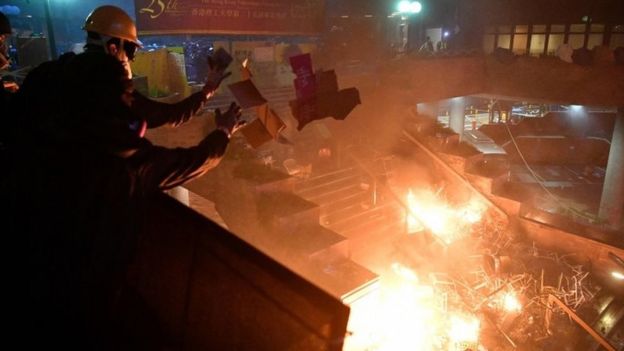 AFP
AFP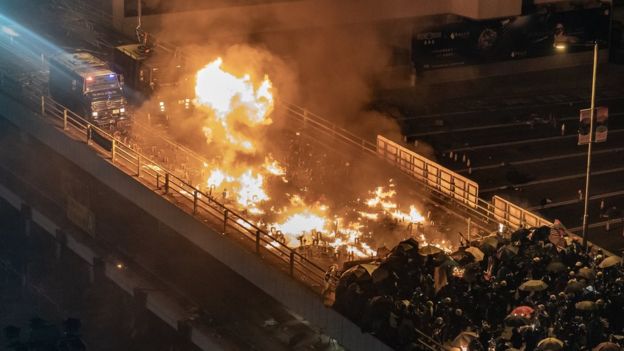 GETTY IMAGES
GETTY IMAGES
"Universities are venues for advancing knowledge and nurturing talents. Universities are not battlegrounds for political disputes and should not be drawn into violent confrontations," it read.
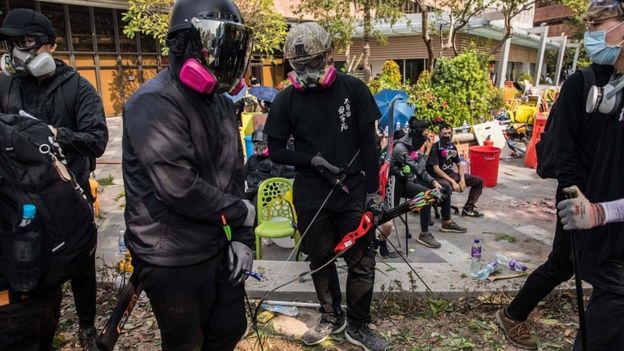 AFP
AFP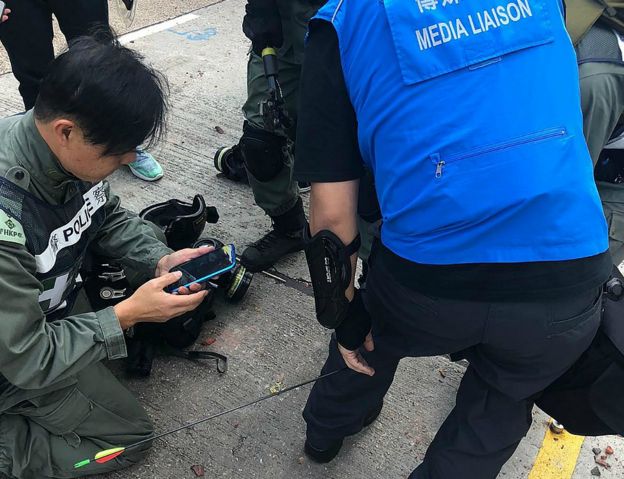 AFP
AFP
On Saturday, in a move that sparked controversy, Chinese soldiers in shorts and T-shirts took to the streets to help clean up debris and remove barricades. It was the first time since the protests erupted that Chinese soldiers, who very rarely leave their barracks in Hong Kong, had taken to the streets.

Why are there protests?
Hong Kong - a British colony until 1997 - is part of China under a model known as "one country, two systems".
Under this model, Hong Kong has a high degree of autonomy and people have freedoms unseen in mainland China.

The protests started in June after the government planned to pass a bill that would allow suspects to be extradited to mainland China.
Many feared this bill would undermine the city's freedoms and judicial independence.
The bill was eventually withdrawn but the protests continued, having evolved into a broader revolt against the police, and the way Hong Kong is administered by Beijing.
China
Chinese soldiers clean up Hong Kong streets
- 16 November 2019
- China
Australian politicians banned from China
- 17 November 2019
- Australia
US heiress who raised $35m bail cleared of murder
- 16 November 2019
- US & Canada
Features
Elsewhere on the BBC
Football phrases
15 sayings from around the world




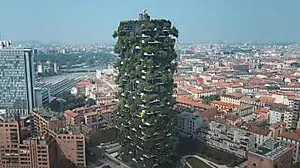







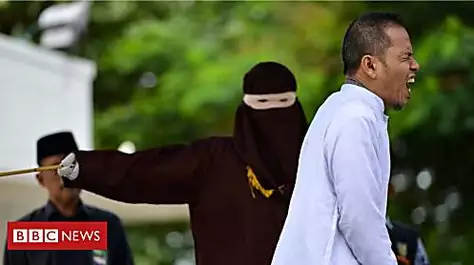

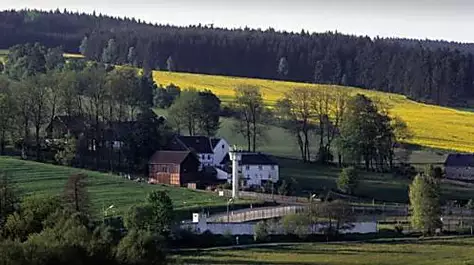


![[Pics] She Cheated And Stole From Him, So He Plotted Revenge On Her Special Day [Pics] She Cheated And Stole From Him, So He Plotted Revenge On Her Special Day](https://images.outbrainimg.com/transform/v3/eyJpdSI6IjE5M2JhMmY3OTA0YmMyMWE3NWFiY2RmNjNlY2Q4YThhYzk5Nzk4MGI2OWIwMzgzMzIzNGMzYjAwMTc5MDkyZGEiLCJ3IjoxNjAsImgiOjkwLCJkIjoxLjUsImNzIjowLCJmIjo0fQ.webp)
![[Pics] NBA Legend Larry Johnson Just Confirmed What We Feared All Along [Pics] NBA Legend Larry Johnson Just Confirmed What We Feared All Along](https://images.outbrainimg.com/transform/v3/eyJpdSI6ImQwYTYwZGZlMjRjMTEzODk4ZDk4NjU5ZTU5MzlkNjZhMDQ5OGE1YzIzMGViZmIxYzYwODQ5OTA5MTY4Yjg2NTQiLCJ3IjoxNjAsImgiOjkwLCJkIjoxLjUsImNzIjowLCJmIjo0fQ.webp)

![[Photos] Officer Didn't Expect To Discover This When Pulling Over This Woman's Car [Photos] Officer Didn't Expect To Discover This When Pulling Over This Woman's Car](https://images.outbrainimg.com/transform/v3/eyJpdSI6ImZhYWNlMGIwZGQ1ZGU4ZjIwZGU2ODA1MWZiYzlkYTdiNzYxYTNmN2M4YmMxOTUzNjQzYzI1MDVlYjM5MGRjMDUiLCJ3IjoxNjAsImgiOjkwLCJkIjoxLjUsImNzIjowLCJmIjo0fQ.webp)











No comments:
Post a Comment